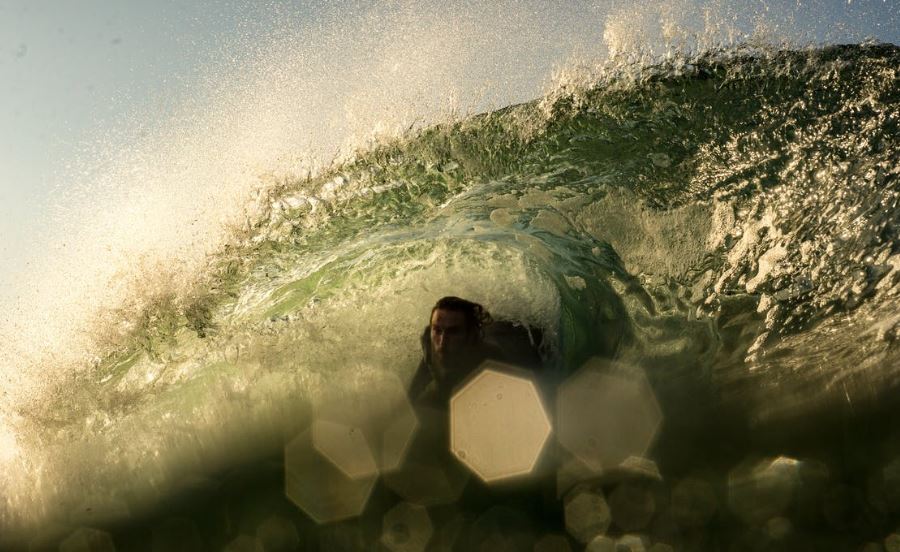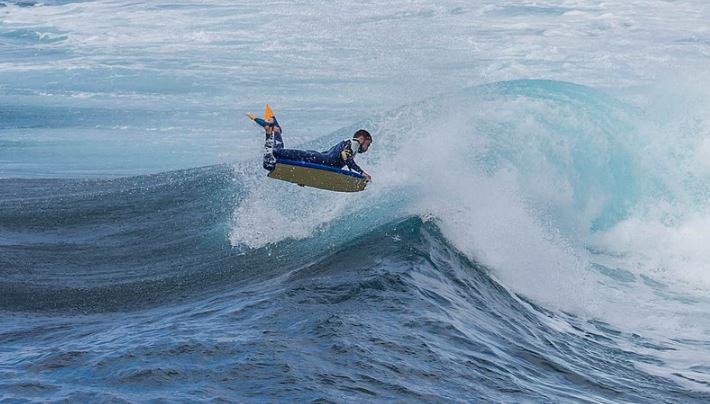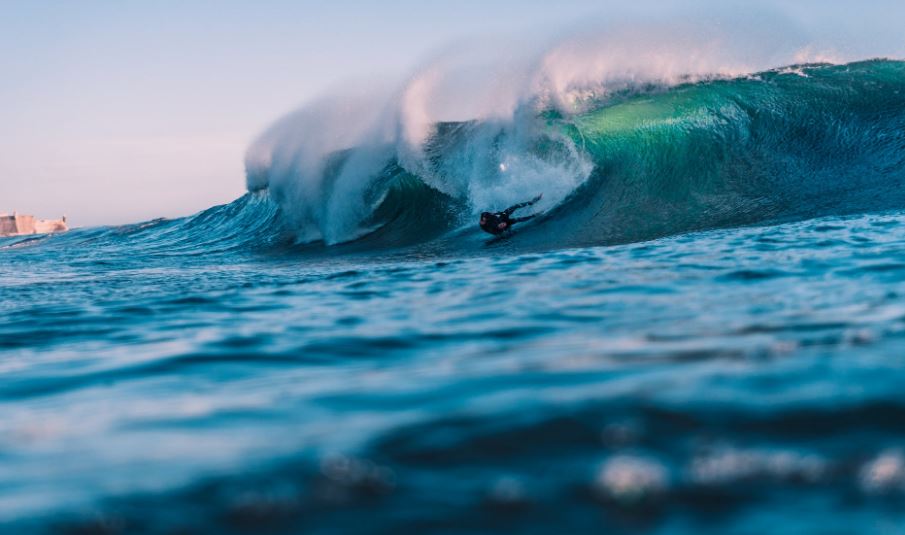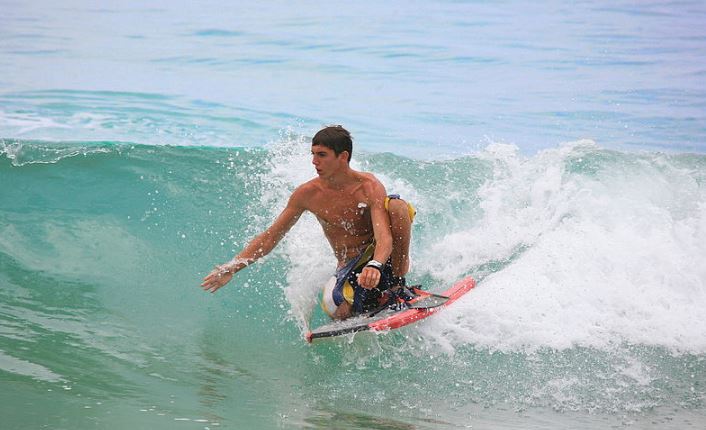Boogie boarding is now a worldwide phenomenon. In less than 50 years, or since Tom Morey crafted the world’s first boogie board, the sport has spread across continents and countries.
However, you may be puzzled. Is it a bodyboard or a boogie board? Are there any distinctions between the two? How about a boogie board competition? These are among the questions we addressed in this article.
Bodyboards vs. Boogie Boards
Bodyboards and boogie boards are technically the same thing. The main distinction is that a bodyboard is the proper name of the board and sport, whereas the term “boogie board” was coined by a company called Morey Boogie, founded by Tom Morey.
Just as someone might incorrectly refer to a tissue as a Kleenex or a hot tub as a Jacuzzi, someone might incorrectly refer to a bodyboard that is not associated with the boogie board brand as a “boogie board.” This is because Kleenex and Jacuzzi are the companies that manufacture those products, not the product name itself.
The first boogie boards were invented in 1971 by Tom Morey to ride the surf in Hawaii. Morey was a massive fan of boogie-woogie jazz music, inspiring the name Morey Boogie.
Morey Boogie, Tom’s bodyboard company, grew to be among the largest producing board companies at the time and one that had the greatest impact on the sport for years to come. He later sold his company to a toy company, which coined the “boogie board.”
When other companies started making similar boards, they were not permitted to use the trademarked boogie board name, so they started calling them bodyboards.
So, yes, there is no distinction between bodyboards and boogie boards.
Boogie Board Competitions
There have been several world tour circuits for competitive bodyboarding over the last 30 years, including the International Morey Boogie Bodyboard Pro Championships, the IBA World Tour, the GOB World Tour, and the APB Tour.
While Hawaii has hosted the Pipeline Pro for decades, mainland America has strived to develop long-term events on the bodyboarding calendar. Even though there are dozens of world-class peaks on both the East and West Coasts, bodyboard competitions have never been popular. At the very least, on a world tour level.
The Evolution of Bodyboarding’s World Tours
Bodyboarding has been paddling waves since Tom Morey invented the 4’6″ bellyboard in 1973. However, it took a while for the first professional competition to crown a world champion. Let’s take a look at the colorful road of pro bodyboarding.
The 1979 Morey/Gap Pro was the first professional bodyboarding competition. It took place in Huntington Beach, California, and was sponsored by Morey Boogie, Tom Morey’s brand that already sold thousands of bodyboards per month.
The young wave sport would have to stand in line until 1982 for the first “unofficial” world championships when Daniel Kaimi was crowned bodyboarding’s first world champion at the first-ever International Morey Boogie Bodyboard Pro Championships (IMBBPC).
The IMBBPC insignia was used until 1994, even though the event was not held in 1985; Mike Stewart bagged eight of the twelve titles during this period. During the IMBBPC period, Ben Severson, Michael Eppelstun, and Guilherme Tâmega were also crowned winners in 1986, 1993, and 1994, respectively.
Randy Rarick, a surf organizer, contributed to the formation of the Association of Professional Bodyboarders (APB) in 1992, intending to develop the sport at all levels.
The 1990s
The Global Organization of Bodyboarding (GO Bodyboarding) took over professional bodyboarding and established a new world tour model in under three years. The first event, held in Viana, Portugal, was a huge success. By the end of 1995, the name had been slightly modified to Global Organization of Bodyboarders (GOB), and Guilherme Tâmega won the first world title of the new era.
From 1995 to 1999, the GOB World Tour was in full swing. Tâmega won three medals, while Andre Botha won two world titles. Each year, the performance levels improved, and new grand surf spots were introduced to the schedule, including Reunion Island, Pipeline, and even a surf pool.
Pro bodyboarders were divided in 1999: half thought the GOB World Tour was well-balanced, while the other half wanted to ride in significant waves. As a result, big wave fans took control, and the GOB Super Tour was born.
Everybody thought the new format had a promising future when the world’s best riders competed at Teahupoo in 2000. However, 9/11 resulted in a drop in investment, and pro bodyboarding was no longer a priority for surf industry brands.
The 2000s
The newly formed International Bodyboarding Association (IBA) launched the IBA World Tour in 2003, ushering in a new era of women’s and junior divisions, Drop-Knee, sponsorship, dual ranking systems, online broadcast, media communications, and new venues.
The IBA World Tour has crowned six new champions in 11 seasons: Jeff Hubbard, Ben Player, Damian King, Uri Valadao, Amaury Lavernhe, and Pierre-Louis Costes.
Nonetheless, a heavy structure and the passage of time forced a new change.
The riders decided to start over when the organization’s funds ran out. The Association of Professional Bodyboarders (APB), headed by Alex Leon and Mike Stewart, gave millions of bodyboarding fans new hope in 2014.
Terry McKenna, Leon, and their crew pulled the plug after six successful seasons, claiming it was no longer feasible to execute a competitive tour with no additional revenue streams. The International Bodyboarding Corporation (IBC) took over in 2020 with a new South American-based organization and Spanish organizers.
The International Morey Boogie Bodyboard Pro Championships
In 1982, this was the first boogie-only competition. The ceremony was a stand-alone world championship that ran from 1982 to 1994, except for 1985, when it did not take place.
The sport was experiencing rapid growth, with events even being televised on ESPN.
The GOB World Tour
The GOB World Tour, which ran from 1994 to 2002, was the first-ever professional bodyboarding world tour. Before the GOB, bodyboarding crowned its women’s and men’s world champions at a single world championship event each year, Pipeline.
The GOB began with the men in its first year, and the women joined the tour in 1995. The men’s competition had two-tier systems: the WST (World Super Tour) and the WQT (World Qualifying Tour).
The GOB existed until 2002 when it was replaced by the IBA (International Bodyboarding Association, 2003-2013).
The IBA World Tour
The 2005 IBA World Tour is the only professional bodyboarding World Tour, and it is historic for several reasons. This season, Ben Playe won the first of his three Men’s World Championships.
Dave Hubbard also won the first of his six Drop Knee world titles in 2005. Then, in what may be the season’s most significant historical moment, Kira Llewellyn would become the first non-Brazilian to conquer the Women’s World Title in Bodyboarding.
The APB World Tour
The APB World Tour is a men’s international bodyboarding tour that began in 1994 and has undergone a few name and regulation changes since then. Every year, the bodyboarder with the highest ranking, as determined by points earned while competing in World Tour global events, is awarded the world title.




